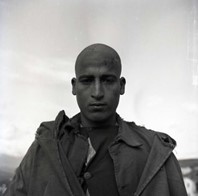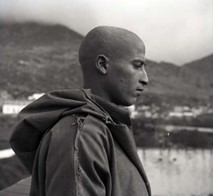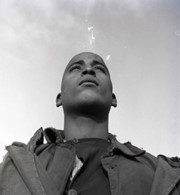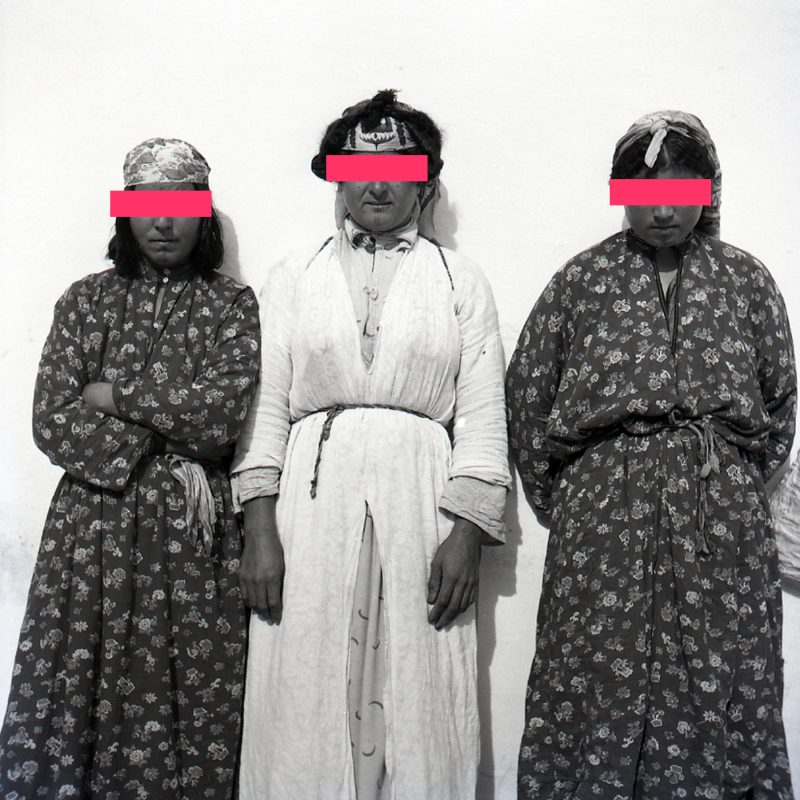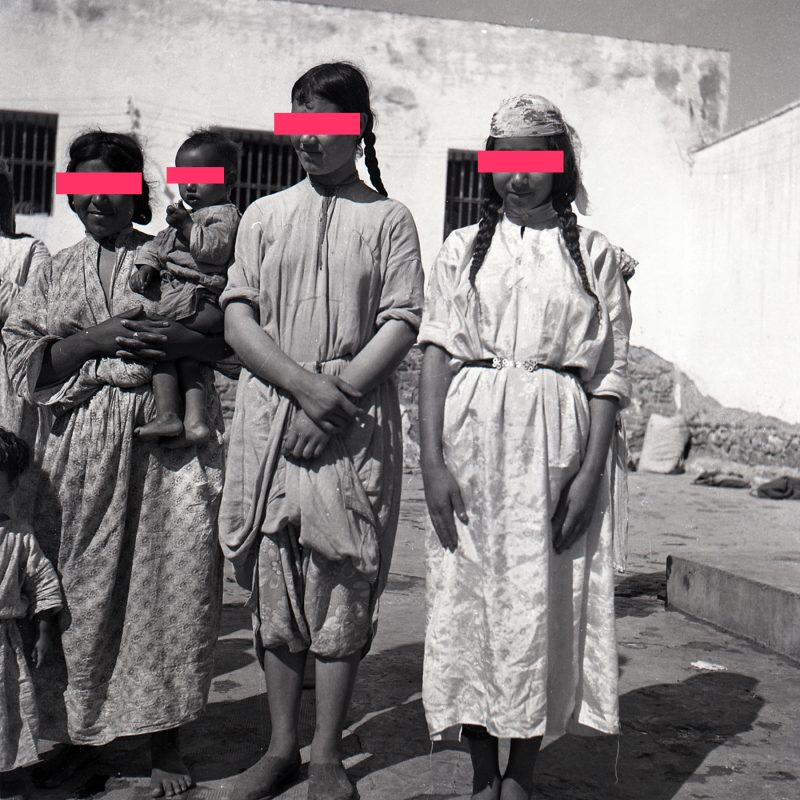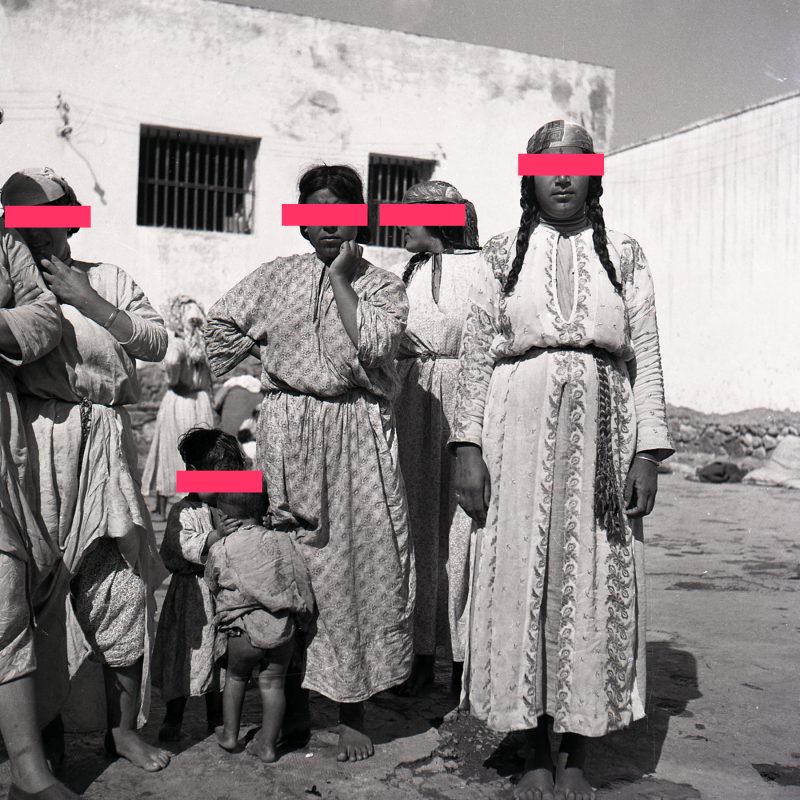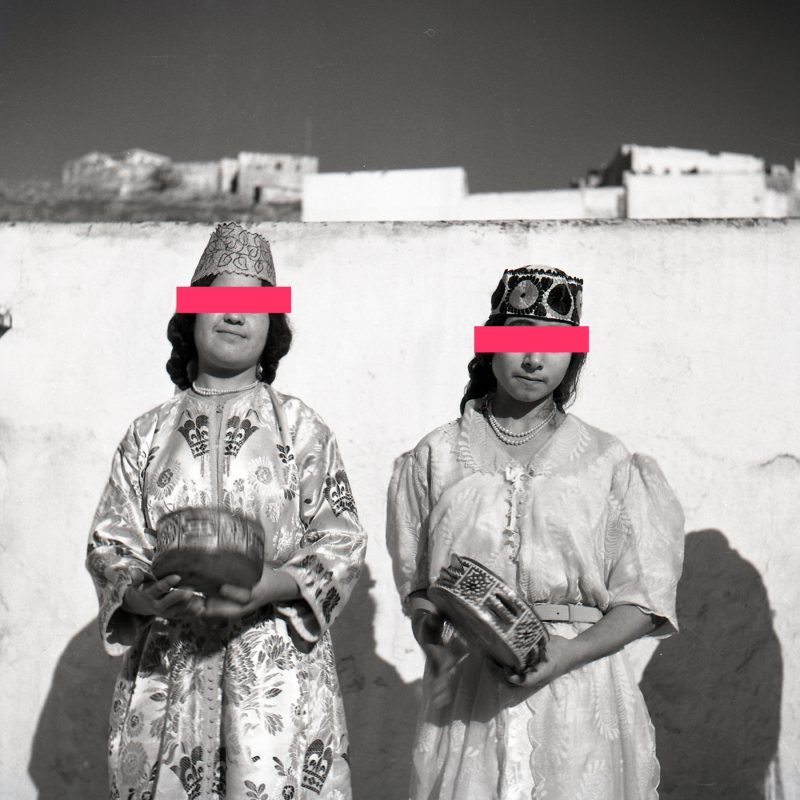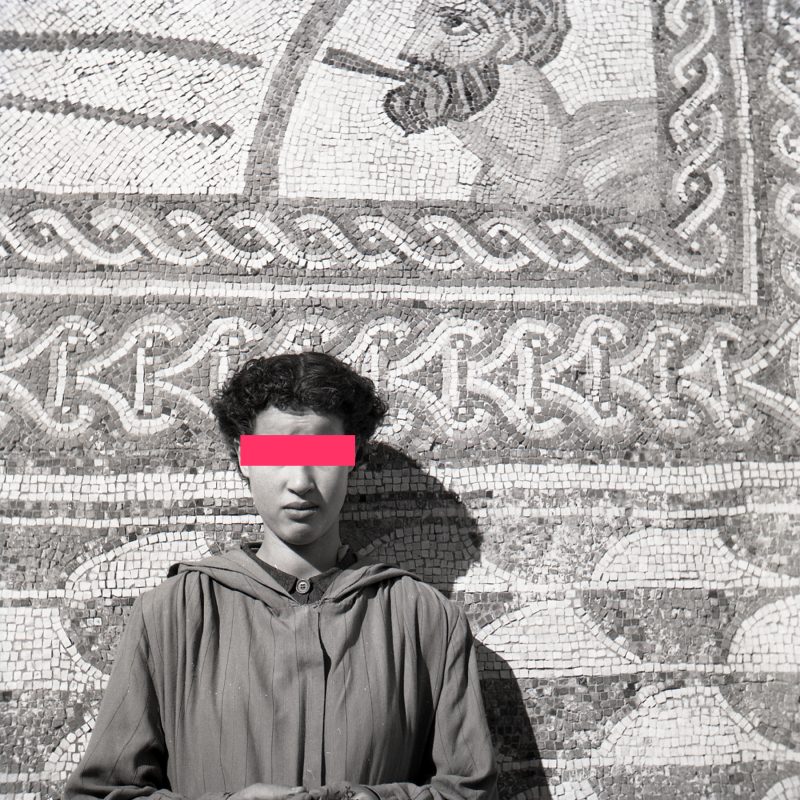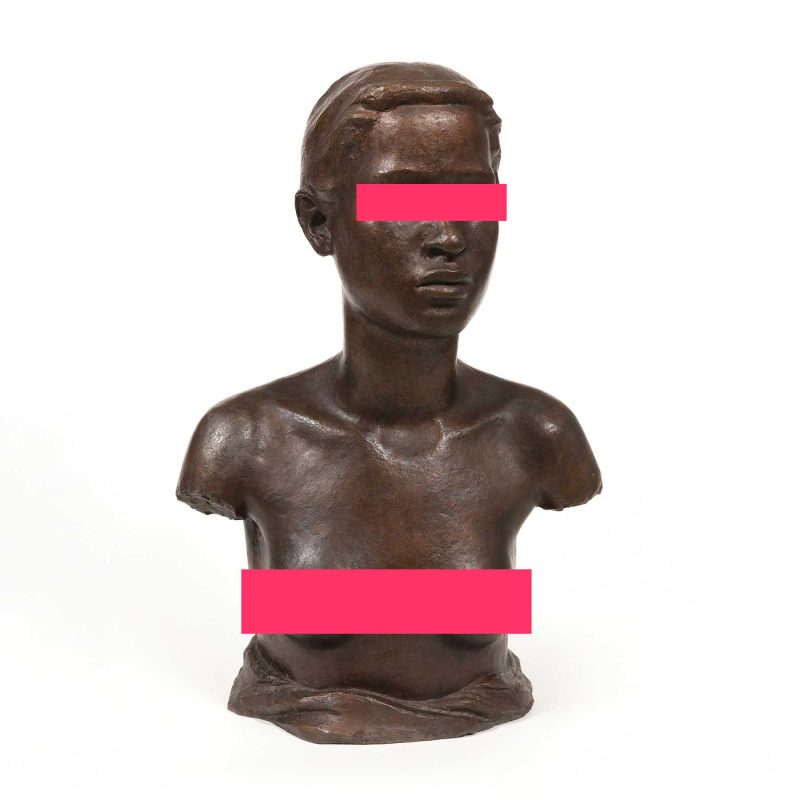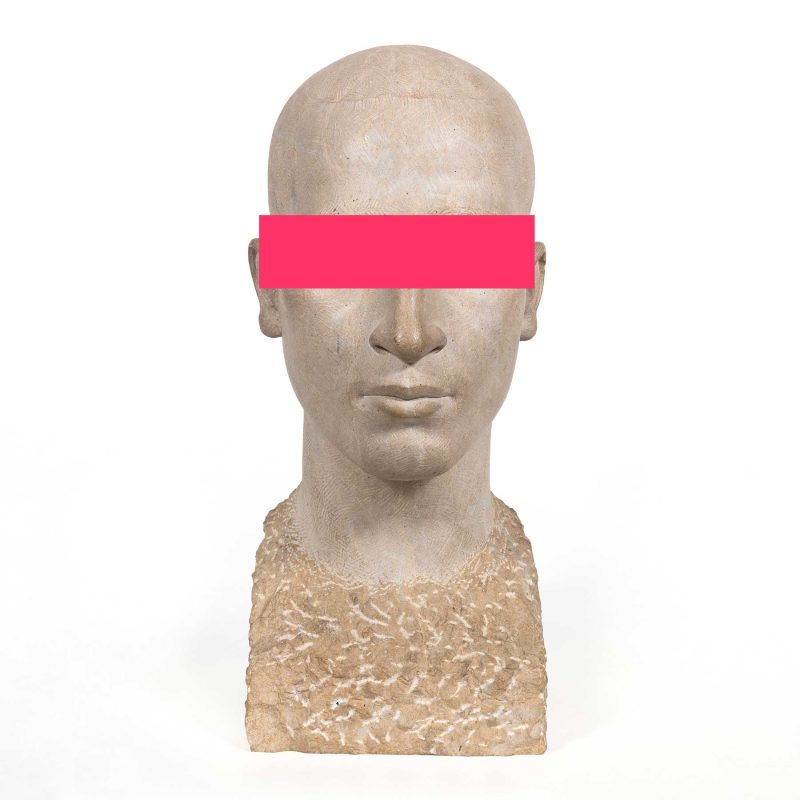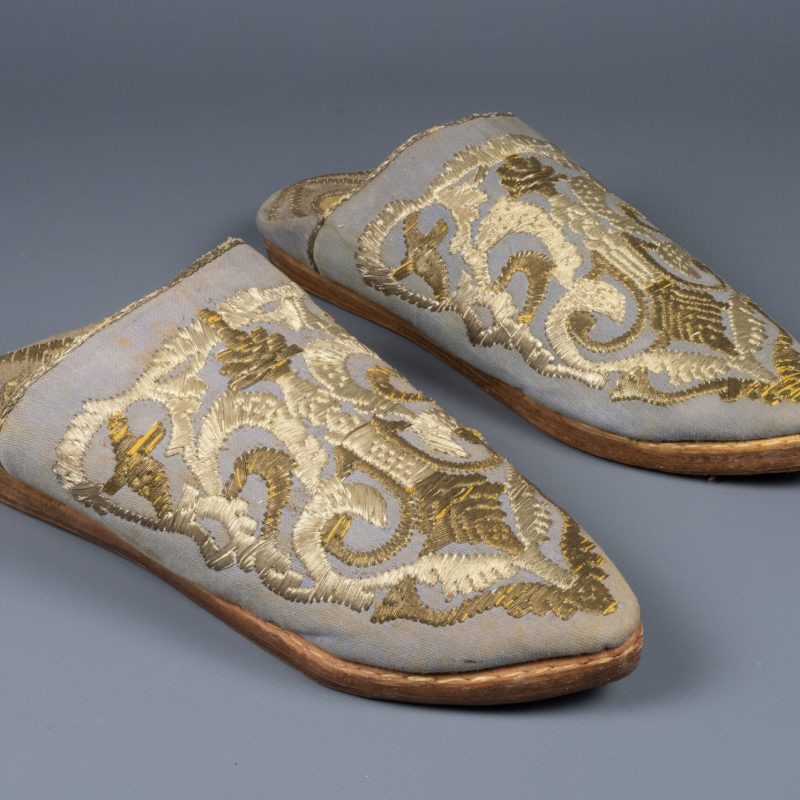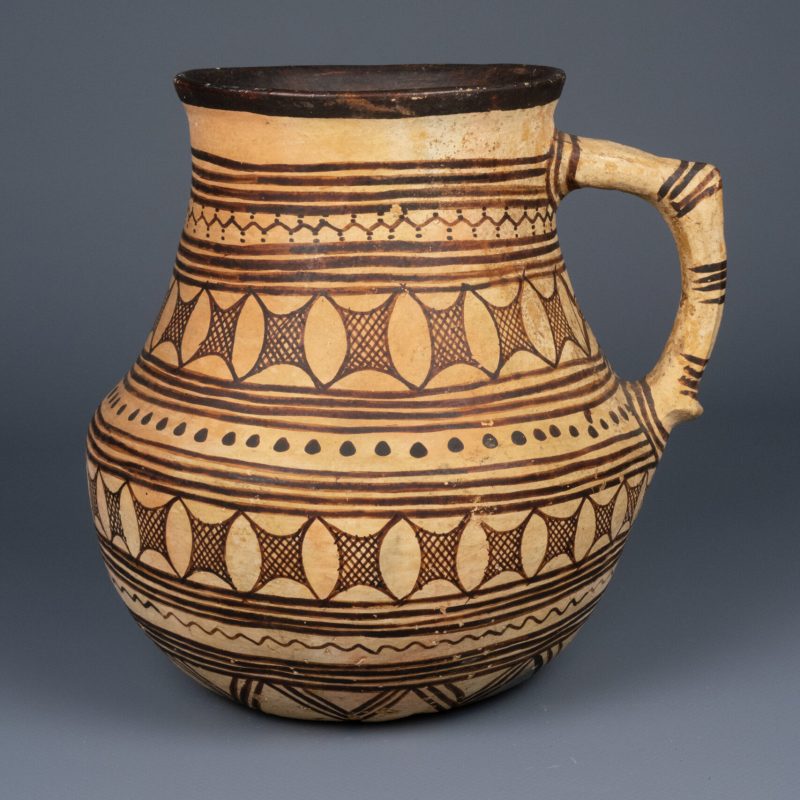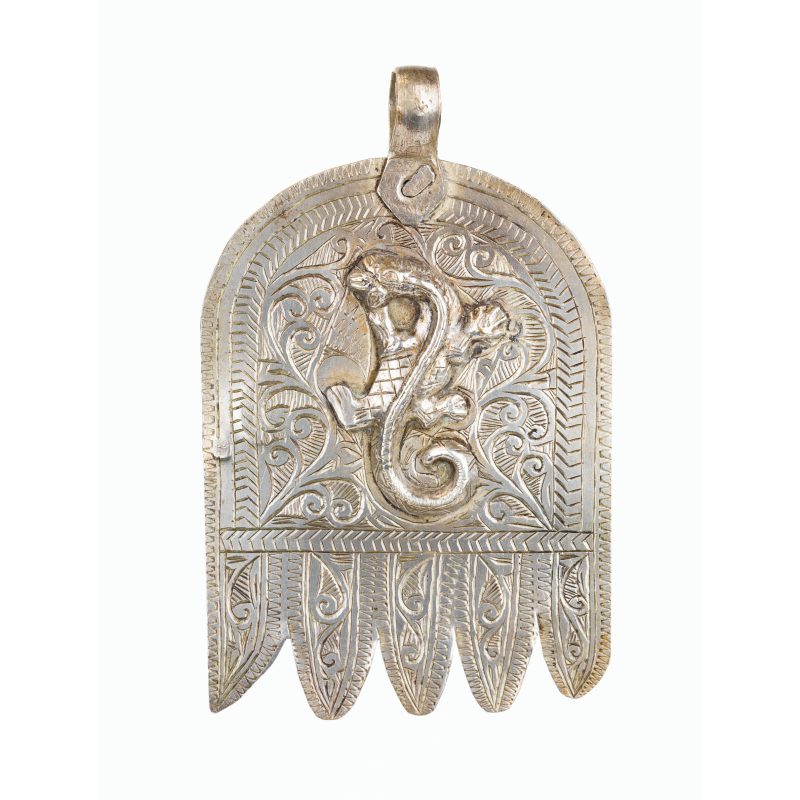Summary of results
Photograph documenting Eudald Serra’s sculptural activity, probably taken on the afternoon of 5 January 1956, on the upper floor of the Office of Intervention in Chefchaouen. Serra’s model was a young anti-colonial activist, a ‘nationalist prisoner’, identified as Lahadar ben Kaddur ben Milud [sic]. The photograph, as well as the resulting sculpture (MEB 46-2) and other complementary clichés (MEB F001UD068 2629, MEB F001UD068 2630 and MEB F001UD068 2631) point to the collusion between the scientific and artistic practice of the MEC and the Spanish colonial administration. Thus becoming a relevant example of the intrinsic violence that accompanied this type of supposedly objective and altruistic work.
Chronological reconstruction of provenance
This is a photograph taken by August Panyella to document the sculptural activity carried out by Eudald Serra as part of the MEC expeditions to the northern part of the Spanish Protectorate in Morocco. In this case, we can date it precisely: in his diaries, E. Serra clearly indicates that, as part of the third expedition (1955–1956), the members of the MEC arrived in Chefchaouen on 5 January, and that there they paid a ‘visit to the inspector Lieutenant Colonel Casas and Mr. Pereda, who gave us permission to visit the prison. In the afternoon, a visit to the prison. We choose [sic] a guy from the French zone near the Spanish area’ (E. Serra, Travel Journals, 1947–1991). Admittedly, this information is not sufficiently clarifying, but Serra goes on to provide other information that does allow us to situate the context: ‘I set up my workshop in the intervention, in the topographer’s office. High windows and good light’ (E. Serra, Travel Journals, 1947–1991).
To complete the circle of the traceability of the cliché, we must refer to Panyella’s diaries of the same dates. In them, the director of the MEC indicated that, as part of the third expedition, Serra had made two busts in Chefchaouen: one of a forty-two-year-old Mehazni kif [sic] smoker, called Sidi Abdelá ben Sidi Abderrahmán, and the other of a nationalist prisoner from a berber tribe near Uxdá, identified as Lahadar ben Kaddur ben Milud [sic] (MEB L128 07 02). It is the combined action of these data that allows, in our view, a fairly accurate tracing.
First of all, the Office of the Intervention in Chefchaouen, the topographer’s office. The cliché shows an open-plan space with high ceilings, maps hanging on the walls and rolled-up plans, which corresponds perfectly to Serra’s description. On the other hand, the man who serves as a model in the cliché looks like a young man who has by no means reached his forties, with worn-out clothes, which is also consistent with a hypothetical condition of a nationalist prisoner. We must understand, as we shall see later, that the political climate in January 1956 had become very tense, and that the nationalist and anti-colonial campaign was beginning to wreak havoc, also in the Spanish zone, which justifies the fact that the prisons were full of fighters. The fact that, moreover, in the present cliché, the model was accompanied by two soldiers, one of them—on the right—in the uniform of the Mehala Jalifiana, an indigenous military unit created by the Spanish army, suggests that the man was being guarded while serving as a model, and that once the task was finished, he would be returned to prison.
There is one last element that reinforces this hypothesis. In the MuEC’s photographic archive there are three more photographs (face, profile and upside down) of the man portrayed in cliché no. 2768: these are the clichés MEB F001UD068 2629, MEB F001UD068 2630 and MEB F001UD068 2631 (above, in that order). Apart from the fact that in these clichés we can better capture the wear and tear on the prisoner’s clothes and, in the case of 2630, a mountain in the background perfectly identifiable as the landscape of Chefchaouen, the ambiguous nature of the photographs, halfway between an artistic study and a police identification card, we believe that they clearly illustrate the violence that accompanied artistic and/or scientific activities under colonial rule. Faced with resistance to collaborate in a task that was probably perceived by the population of the protectorate as one more instrument in a strategy of control, the expeditionaries had no choice but to turn to the colonial military authorities and impose the model system by force. The resigned, sad and interested face of the young prisoner of the Spanish colony is a good example of the contradictions of the allegedly altruistic and objective ideology of a science, in reality, at the service of colonial domination.
In short, the most significant aspect of the photograph is that it illustrates Serra’s sculptural activities in the context of the expeditions to the northern part of the Spanish Protectorate in Morocco. Especially his use of the ‘total institutions’, that is, the spaces of confinement where, by their nature, they had easy access to a series of models which in other contexts resisted the demands of the expeditionaries.
We are not aware that the photograph in question has been used in any of the exhibitions that the MEC/MEB/MuEC has devoted to Morocco over the years, with the exception of the recent report by López Bargados, A. and Martín López, S. (2022). Between souks and internment facilities. Itineraries and procedures in the expeditions of the Ethnological and Colonial Museum of Barcelona to the Spanish Protectorate of Morocco (1952–1956). Barcelona City Council.
If the provenance research is correct, the photograph was added to the MEC collection on 25 January 1956, like the rest of the photographs in the collection.
Estimation of provenance
Chefchaouen (in Arabic: شاون; in tarifit ⴰⵛⵛⴰⵡⵏ), Morocco
Possible alternative classifications
The inventory should make reference to the fact that clichés nos. 2629, 2630, 2631 and 2768, as well as piece MEB 46-2, represent the same person, and record his status as an anti-colonial militant and, if necessary, his name, i.e. Lahadar ben Kaddur ben Milud [sic].
As for the museographic information on the piece, certain things should be more clearly stated, such as: the existence of a system of confinement spaces articulated by the Spanish colonial administration, and how the MEC expeditionaries relied on it to successfully carry out activities that they presented as purely scientific and artistic.
Complementary sources
Archives:
Arxiu del Museu Etnològic de Barcelona
Arxiu Panyella-Amil, caixa A7, expedient 5
MEB, L128 05 02
MEB, L128 06 07
MEB, L128 07 01
MEB L128 07 02
MEB, L128 07 06
Fundació Folch de Barcelona
Eudald Serra. Cuadernos de viaje, 1947-1991
Bibliography:
Etxenagusia Atutxa, B. (2018). La prostitución en el Protectorado español en Marruecos (1912-1956) (tesi doctoral). Barcelona: Universitat Pompeu Fabra.
Huera, C., i Soriano, D. (1991). Escultures antropològiques d’Eudald Serra i Güell. Barcelona: Fundació Folch i Ajuntament de Barcelona.
Mathieu, J., i Maury, P. H. (2013). Bousbir, la prostitution dans le Maroc colonial: ethnographie d’un quartier reserve. París: París-Méditerranée.
Mbembe, A. (2001). On the postcolony. Berkeley: University of California Press.
Taraud, C. (2003). La prostitution coloniale. Algérie, Maroc, Tunisie (1830-1962). París: Payot.
Valderrama, F. (1956). Historia de la acción cultural de España en Marruecos, 1912-1956. Tetuan: Marroquí.

![Sr. Serra modelant cap berber al taller del fotògraf [sic]; Xauen](https://trafricants.org/wp-content/uploads/2025/01/2768v2-1-768x768.jpg)
